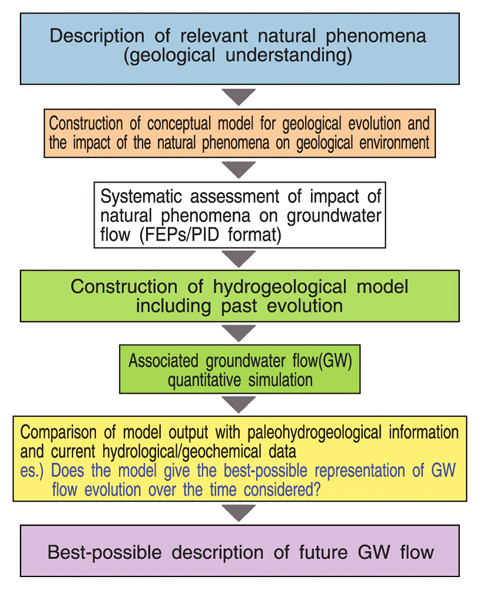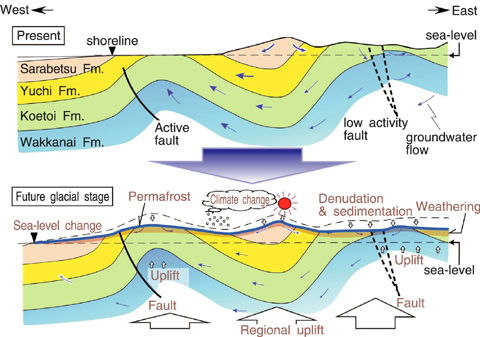
Fig.2-14 Basic framework for long-term prediction of groundwater (GW) flow changes

Fig.2-15 A conceptual model of likely future evolution of GW flow in the Horonobe area
A representative scenario for a human environment to be affected by waste disposed in a deep geological formation, is the groundwater scenario, where radionuclides are transported to the surface along with flowing groundwater (GW). The GW flow will be changed by natural phenomena such as precipitation/shoreline changes due to a climatic/sea-level change, and changes of topography/geological structures due to uplift, subsidence, and denudation on the geological timescale. Therefore, a critical issue for improvement of confidence in the long-term safety of the geological disposal is assessment of the safety taking into account expected long-term evolution of GW flow. We have been doing R & D of prediction of the GW flow evolution in the Horonobe area, northern Hokkaido as a case study, taking into consideration the impact of natural phenomena.
Basic methods of geological prediction are classified into two groups: (1) prediction by extrapolation of the tendencies and regularities of natural phenomena in the past, (2) prediction by analogy based on a study of the effects phenomena which resemble those expected in the study area. In any method, studying the past geological history is the key to predicting the future. We have developed a methodology for describing future GW flow using various site investigation technologies (Fig.2-14). Future likely evolution of the GW flow is described on the basis of past GW flow evolution determined by the geological history; it assumes that future natural phenomena will occur under much the same conditions as they did in the past.
The GW recharge will be reduced in a future glacial stage due to development of permafrost and precipitation reduction, and the flux and pathway of GW flow also will change due to a change of hydraulic gradient caused by topographic changes and lowering of sea-level (Fig.2-15).
We have been carrying out GW flow simulation for estimation of the past GW flow evolution taking account of the impact of natural phenomena. The results will be confirmed by comparison with the groundwater chemistry obtained by borehole surveys etc.